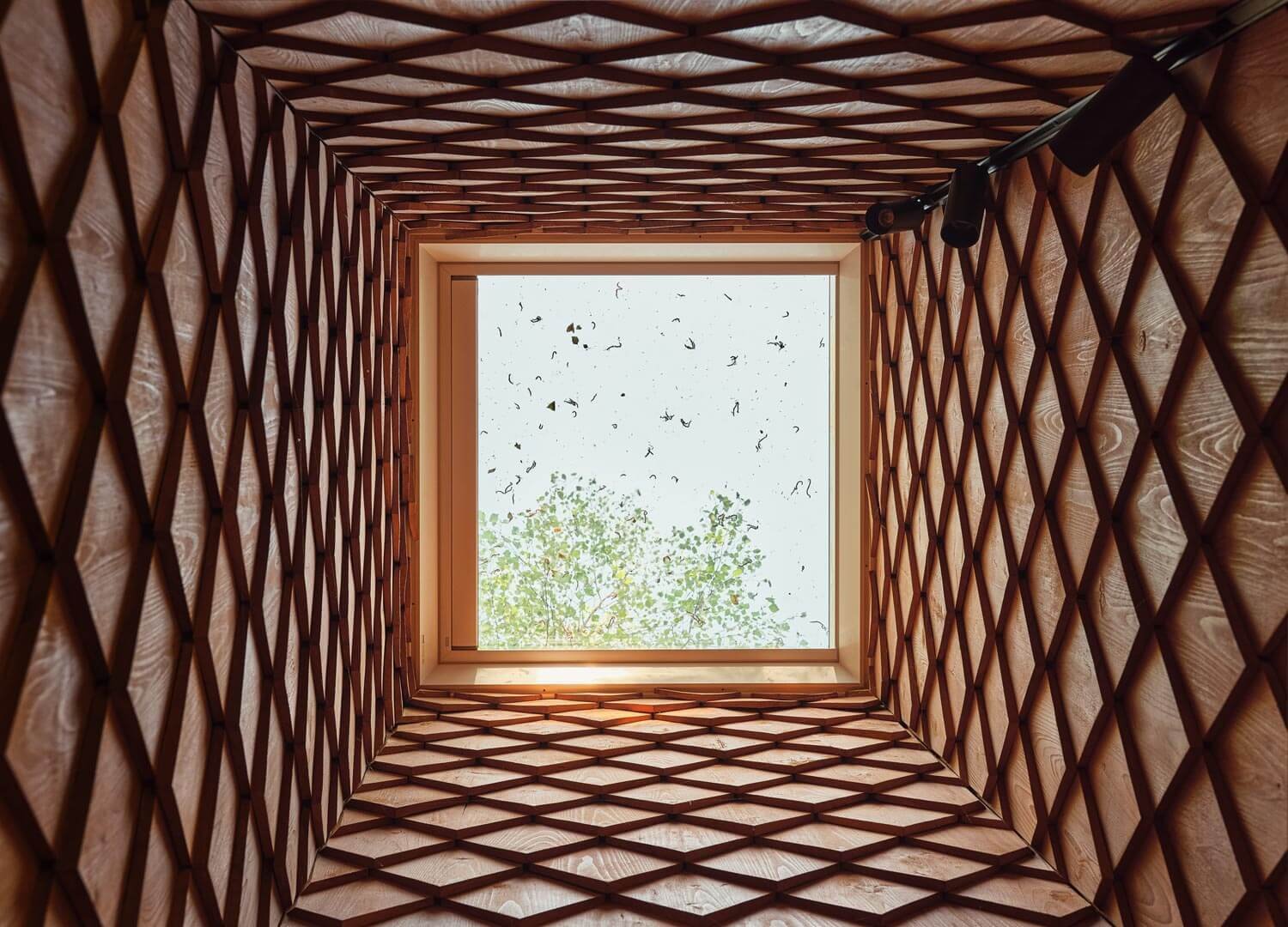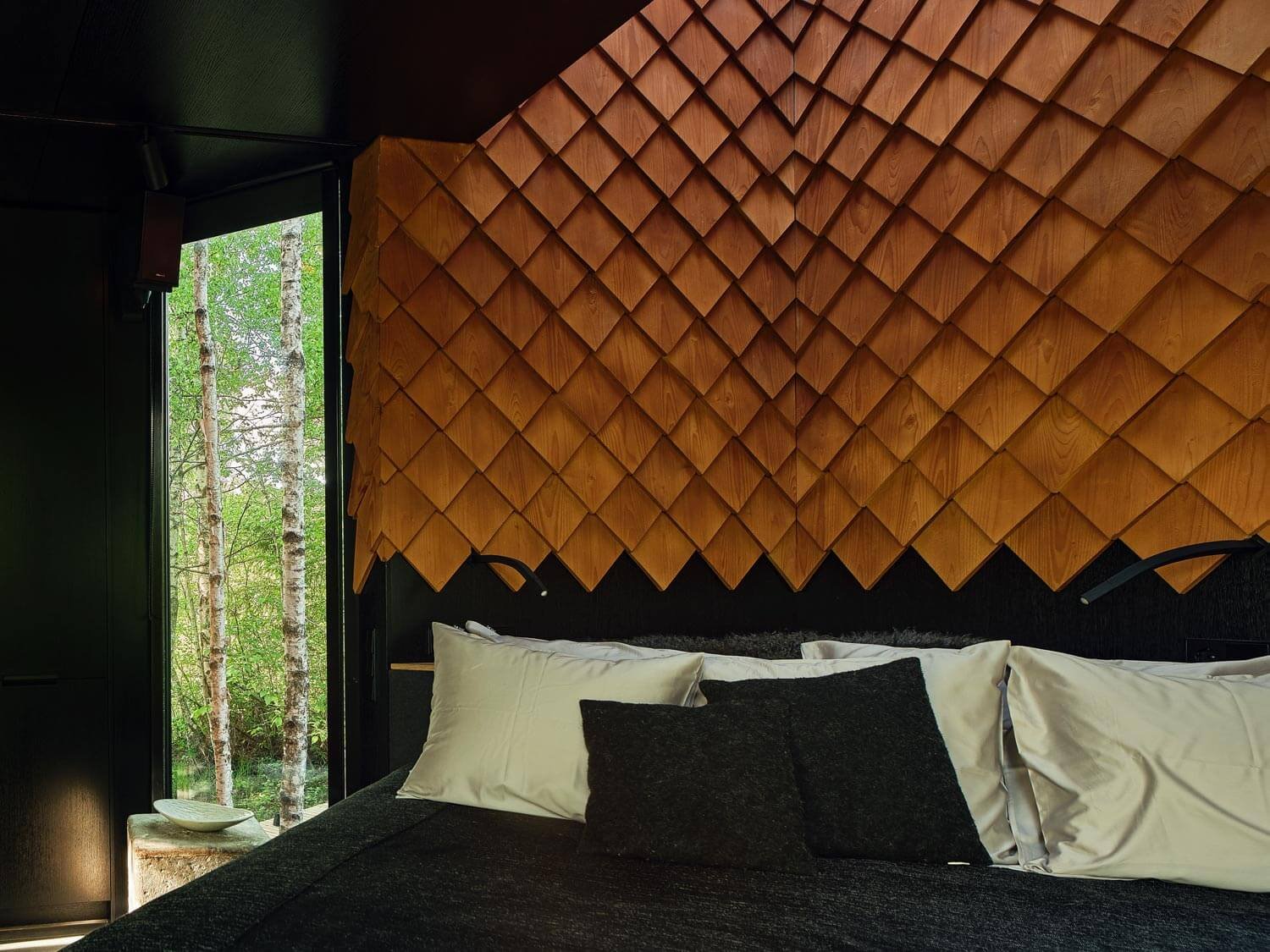KÄBI won the Estonian facade award. Mari Hunt: KÄBI allowed me to explore links between innovation and tradition in architecture
We are happy to announce that Nature Villa KÄBI has received an award – A special price for the prize facade of the Wooden Building of the Year 2022.
Mari Hunt, one of the architects of the Nature Villa KÄBI said that KÄBI allowed her to explore links between innovation and tradition in architecture: "One of the details I’d really like the visitors to notice is the layered wood shake siding, in Estonian, 'kimm'.“
Follow the thoughts of Mari Hunt and let’s peek into the details of the wood shakes origins and what makes the facade of the villa KÄBI unique.
Mari Hunt – Estonian architect and co-founder of b210 architects
Please tell us how would you describe Nature Villa KÄBI.
A symbiosis of a prehistoric creature and a spaceship with tactile armored skin flying over Estonian bushes and bogs. :)
Photo by Tõnu Tunnel
Where did you get the idea to build the exterior façade of layered wood shakes, in Estonian, ‘kimm’?
I use wood a lot in my designs: as a construction material or interior and exterior finishings. The wooden facade is usually one of the first options for smaller buildings. When designing the KÄBI we (me and my colleague Arvi Anderson) considered the harsh conditions the building was going to be located in – at the edge of a bog where at least once a year the river floods the area and creates so-called gift season.
The facade of KÄBI is intimately inspired by both local nature and local building culture: the red-brown wood shake siding on the indoor and outside walls is a heritage roof covering method. This ancient wooden roof cover technique can still be spotted on some of the oldest local rural saunas and cottages but might be still familiar to visitors from Europe and Northern America, too. Shake roofs have been making a comeback, with them being recognized as a more environment-friendly building choice.
Photo by Tõnu Tunnel
Tell us about the wood shakes origins.
All the shakes used on the walls of KÄBI were custom-made especially for this house by a local timber company. They are unique in many ways. They are handcrafted specially for that project, and the details are quite innovative. Also, the scale is rather big. Usually, the shakes are used on the roofs, they are smaller and overlap many times to make them weatherproof. But we made the shakes as big as possible, as they are used on the facades and have a decorative purpose.
Photo by Arvi Anderson
Are these mass-produced or handmade?
We gave the task of producing the shakes to a very good South-Estonian craftsman Ain Siska. The shakes were absolutely custom-made for that project, also the spruce used was cut from the nearby forest. He adjusted his existing producing line but still, most of the work was made by hand. The production was time-consuming but the result is so worth it. The whole facade is a bit of a celebration of the local craftsmanship and building tradition.
Wood workshop in South of Estonia and local craftsman Ain Siska. Photo by Arvi Anderson
How many wood shakes are used to build the Nature Villa KÄBI?
There were altogether 7500 wood shakes, every one of them single-cut, planed, kiln-dried, and painted.
Shakes drying in kiln. Photo by Arvi Anderson
Why did you decide to use the layered wood shake siding in the interior design as well?
The intention of KÄBI is to offer comfort, but not by shutting people inside and away from the nature they came to explore – rather create a space that flows smoothly from outside to inside. KÄBI’s goal is to create a pocket of warmth and comfort – a necessity in Estonia’s Nordic climate, with chilly springs and snowy, freezing winters – that still keeps you immersed in the surrounding wild forest and riverbank wetlands.
Using the same material in the exterior and interior dissolves the border between the luxurious hotel room and the surrounding bog landscape. You have the same tactile warm wooden finish at the entrance and also next to the bed when watching the stars through the skylight.
Photo by Tõnu Tunnel
What is the idea and the structure of the house?
Keeping guests in touch with nature was brief by structuring the whole space like an old forest, with separate spatial functions hidden away in treetrunk-like columns. The toilet, shower, technical room, fireplace, and even a jacuzzi are hidden in one of the shake-clad columns. The rest of the room flows between those spaces and feels like walking in the forest. Large floor-to-ceiling windows and skylights add to the feeling, and the terrace jacuzzi reminds of swimming in a bog lake
Illustration by Mari Hunt
What does the name KÄBI mean?
And of course – due to the pattern we used, and their red-brown hue, they are the inspiration for the name of the building. Käbi is a ‘conifer cone’ in Estonian.
Photo by Tõnu Tunnel









